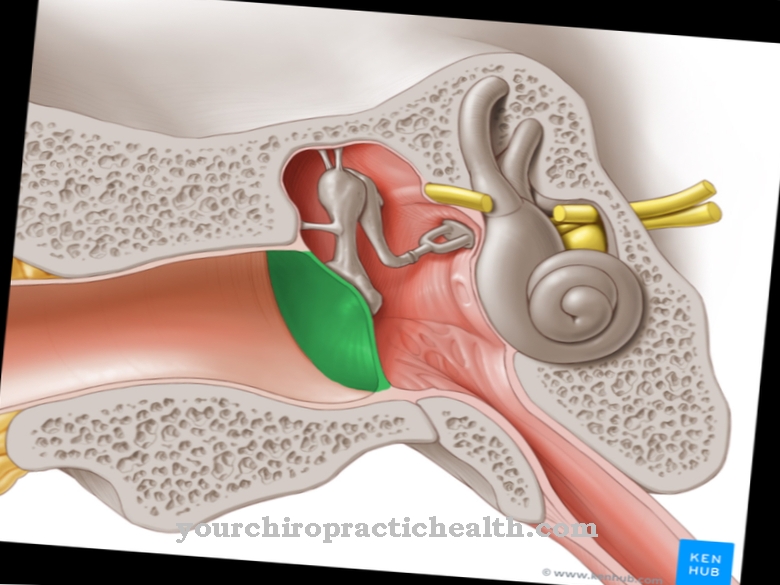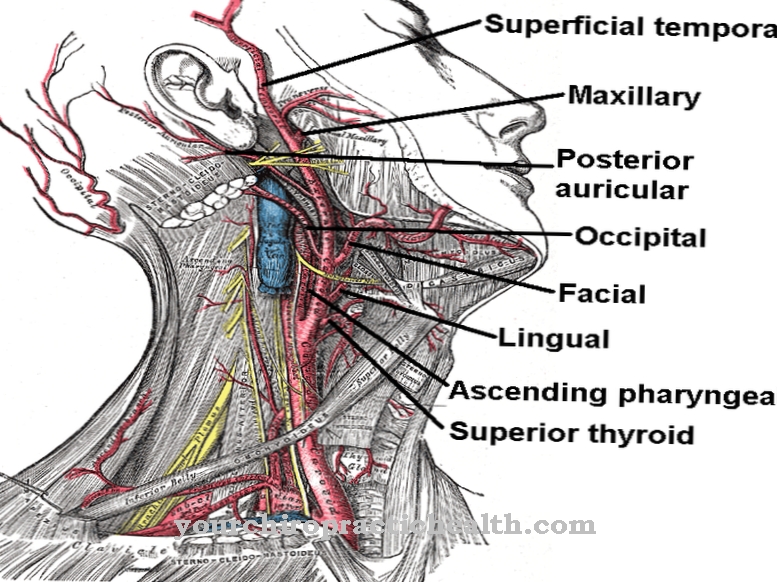The capillary is the finest human blood vessel. It is essential for the supply of nutrients and oxygen to the organs and an important part of the bloodstream.
What are capillaries?
The capillary is the smallest human blood vessel and contributes to the so-called microcirculation. The thickness of its inner wall layer is only one cell.
These microvessels have a diameter of 5 - 10 μm and connect arteries with veins and ensure the exchange of water, oxygen, carbon dioxide and many other nutrients and chemical waste products between the blood and the tissue surrounding it. During embryonic development, new capillaries are created through vasculogenesis, a process of blood vessel formation within which new endothelial cells are formed and expanded into vascular channels.
The term angiogenesis in turn denotes the formation of new capillaries through sprouting or splitting processes from already pre-formed blood vessels.
Anatomy & structure
Blood flows through arteries away from the heart. These branch and narrow further to arterioles and, in a further step, to capillaries.
After the blood has gone through this stage in the circulation, it flows from the capillaries through the enlarged venules to the veins and with them back to the heart. Capillaries do not work on their own. The capillary bed is an intertwined network of capillaries that supply a single organ. The stronger the metabolism of the organ cells, the more capillaries are needed to provide nutrients and dispose of waste products.
The capillary bed can consist of two different vessels: the real capillaries, which are responsible for the actual exchange between cells and the circulation. In addition, there is the vascular shunt in the capillary bed, a short vessel that connects a venule directly with an arteriole.
Function & tasks
Capillaries act in one way as a form of communication between arteries and veins. But they are also small blood vessels that transport blood and supply the various organs.
A network of capillaries that is responsible for supplying individual organs is called a capillary bed. There are innumerable of these in the human body. They supply the organs with amino acids, proteins and most importantly: with oxygen. Without which the organs could neither fulfill their tasks nor survive. In addition to their function as a supplier of essential nutrients through the blood, the capillaries act as disposers of by-products of organic production.
This waste is absorbed by them and passed on to be eliminated from the body. The amount of capillaries in the human body is impressive. If you could add the length of all capillaries in the body of an adult human, you would get 40,000 kilometers. Capillaries and their part in the metabolism are essential for the health and existence of the human organism.
Illnesses & ailments
A noticeable but rather cosmetic complaint in connection with the capillaries is redness in the skin, which occurs when capillaries are injured. Redness of the face is very common, mostly on the cheeks or nose.
This usually happens through too rapid narrowing and / or widening of the vessels, which ultimately leads to ruptures in the vessel walls. Thin and sensitive skin is particularly prone to these reactions. External circumstances that can be avoided to contain these symptoms are: hot environment; strong wind in the face; long, intense sun exposure; rapid temperature change; Squeezing and squeezing the skin.
Certain moles can also be traced back to such discoloration under the skin. There is no health risk. But if the redness can be found on conspicuous parts of the body, it can be treated with laser therapy.
Capillary leak syndrome is one of the far more serious diseases that affect the capillaries. Due to far inexplicable changes in the walls of the capillary vessels, increased blood plasma suddenly escapes and penetrates the surrounding muscle tissue or other body cavities.
If left untreated, these effects will result in a sharp drop in blood pressure, followed by organ failure and death. Capillary leak syndrome is an extremely rare disease. Up to 2002 only about 60 cases were documented.
























.jpg)



